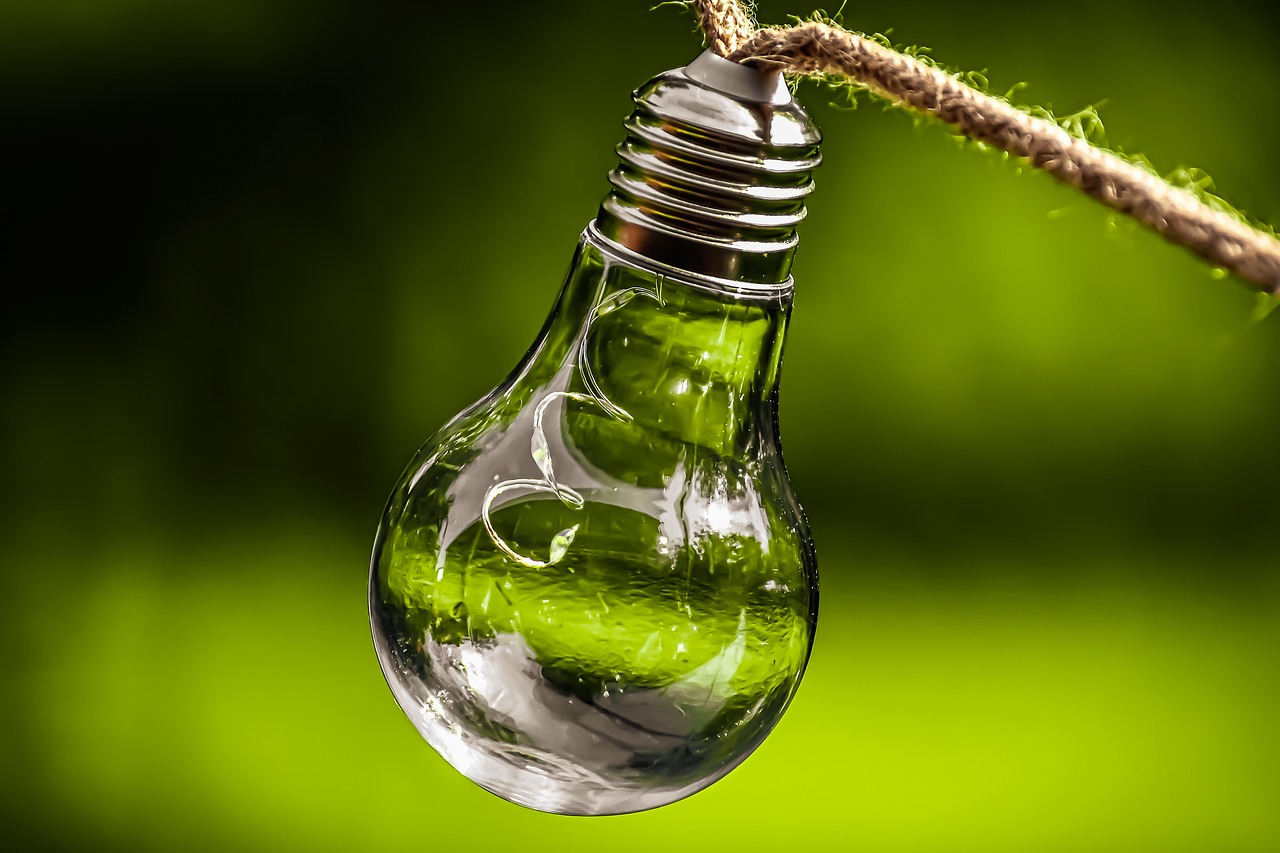In today’s rapidly evolving business landscape, sustainable product innovation has become an imperative for companies seeking to stay competitive and meet the increasing demands of environmentally-conscious consumers. This concept goes beyond simply creating eco-friendly products; it involves integrating sustainable practices into every stage of the product development process, from design to production to distribution. By prioritizing sustainability, businesses not only contribute to the preservation of our planet but also gain a competitive edge in the market. In this article, we will explore the importance of sustainable product innovation, its benefits for businesses, and provide answers to common questions around this topic.
Understanding Sustainable Product Innovation
Sustainable product innovation refers to the development and implementation of new products or services that have a minimal negative impact on the environment and contribute to the overall well-being of society. It involves creating products that are ethically sourced, produced, and disposed of, with a focus on long-term sustainability.
Definition of Sustainable Product Innovation
Sustainable product innovation can be defined as the process of creating and introducing new products or services that meet customer needs while minimizing negative environmental and social impacts. It encompasses various aspects, including the use of eco-friendly materials, energy-efficient design, and responsible manufacturing and distribution practices.

Importance of Sustainable Product Innovation
Sustainable product innovation is of paramount importance in today’s world, where environmental concerns are at an all-time high. By incorporating sustainability into the product development process, businesses can significantly reduce their ecological footprint and contribute to a healthier planet. Moreover, sustainable products often resonate well with consumers who prioritize ethical and eco-conscious choices, leading to increased brand loyalty and market share.
Benefits of Sustainable Product Innovation
The benefits of sustainable product innovation are far-reaching and encompass economic, environmental, and social aspects. By adopting sustainable practices, businesses can reduce their operational costs through energy and resource efficiencies. Additionally, sustainable products often have a longer lifespan, resulting in reduced waste generation and improved resource management.
From an environmental standpoint, sustainable product innovation helps mitigate the adverse impacts of product manufacturing, use, and disposal. By minimizing carbon emissions, reducing resource depletion, and limiting pollution, sustainable products contribute to a more sustainable future.

Key Principles of Sustainable Product Innovation
To effectively implement sustainable product innovation, several key principles should be followed. These principles guide businesses in developing products that achieve both sustainability objectives and customer satisfaction.
Design for Sustainability
Designing products for sustainability involves considering the entire lifecycle of a product, from raw material extraction to end-of-life disposal. By incorporating eco-friendly materials, optimizing product durability, and considering recyclability or reusability, businesses can minimize the environmental impact of their products.
Life Cycle Assessment
Life cycle assessment (LCA) is a crucial tool in sustainable product innovation. It involves assessing the environmental impact of a product throughout its lifecycle, including the extraction of raw materials, manufacturing, distribution, use, and disposal. LCA helps businesses identify hotspots of environmental impact and make informed decisions to improve the overall sustainability of their products.
Circular Economy Approach
Adopting a circular economy approach is essential for sustainable product innovation. This approach aims to minimize waste and maximize resource efficiency by designing products that can be recycled, remanufactured, or repurposed at the end of their life. By embracing circular economy principles, businesses can reduce reliance on finite resources and contribute to a more sustainable economic model.
Implementing Sustainable Product Innovation
Implementing sustainable product innovation requires a holistic approach that involves various stakeholders within a business. To effectively integrate sustainability into product development processes, the following steps should be taken:
Sustainability as a Core Value
Embedding sustainability as a core value within a business is crucial for successful sustainable product innovation. By integrating sustainability objectives into the company’s mission, vision, and values, businesses can ensure that sustainability is considered throughout every stage of the product development process.
Cross-Functional Collaboration
Sustainable product innovation necessitates collaboration across different functions within a business, including design, engineering, marketing, and supply chain management. By involving diverse perspectives, businesses can identify and address sustainability challenges more effectively, leading to more innovative and impactful solutions.
Utilizing Sustainable Materials
The choice of materials used in product manufacturing plays a significant role in sustainable product innovation. Businesses should prioritize selecting materials that are renewable, non-toxic, and have a reduced environmental footprint. Furthermore, considering the entire supply chain and choosing suppliers that align with sustainable practices is essential for maintaining the integrity of sustainable product innovation.
Challenges in Sustainable Product Innovation
While sustainable product innovation offers numerous benefits, it also comes with its fair share of challenges. Understanding and addressing these challenges is crucial for businesses aiming to embrace sustainable practices.
Cost Considerations
One of the primary challenges in sustainable product innovation is the perception that sustainable products are more expensive to produce. Although initial costs may be higher, businesses can often offset these expenses through long-term cost savings, improved brand reputation, and increased market demand for sustainable products. It is crucial for businesses to consider the long-term benefits and return on investment when implementing sustainable product innovation.
Changing Consumer Expectations
Consumer expectations and preferences are constantly evolving, and businesses must adapt to these changes to remain competitive. As consumers become more environmentally conscious, there is a growing demand for sustainable products. However, businesses must invest in market research and keep up with evolving consumer trends to meet these expectations effectively.
Regulatory Compliance
Businesses involved in sustainable product innovation must navigate a complex web of environmental regulations and standards. Compliance with these regulations can be challenging, as they vary across industries and jurisdictions. It is essential for businesses to stay informed about relevant regulations and proactively implement sustainable practices to avoid penalties and maintain a positive brand image.
Successful Case Studies in Sustainable Product Innovation
Looking at successful case studies can provide valuable insights into the implementation of sustainable product innovation. The following examples demonstrate how leading companies have leveraged sustainable practices to drive innovation and achieve business success.
Apple Inc.: Environmental Initiatives
Apple Inc. has demonstrated a strong commitment to sustainability through its Environmental Initiatives program. The company has made significant efforts to reduce its carbon footprint, transition to renewable energy sources, and minimize waste generation. By implementing recycling programs and utilizing recycled materials in their products, Apple has shown how sustainability can be integrated into all aspects of the business.
Patagonia: Sustainable Apparel
Patagonia is an industry leader in sustainable apparel, placing a strong emphasis on ethical sourcing, fair labor practices, and responsible manufacturing. The company has pioneered initiatives to promote recycling and reduce textile waste in the fashion industry. Through innovative product designs and transparent supply chain practices, Patagonia has established itself as a sustainable and socially responsible brand.
Tesla: Electric Vehicles
Tesla has revolutionized the automotive industry by focusing on sustainable transportation solutions. By developing electric vehicles with long-range capabilities, Tesla has proven that sustainable products can be both high-performing and environmentally friendly. The company’s commitment to renewable energy and the development of charging infrastructure has accelerated the adoption of electric vehicles worldwide.

Collaboration for Sustainable Product Innovation
Collaboration is essential for achieving meaningful sustainable product innovation. Businesses can leverage partnerships and engage with various stakeholders to drive innovation and effectively address sustainability challenges.
Partnerships with Suppliers
Developing strong partnerships with suppliers is crucial for sourcing sustainable materials, components, and services. By working closely with suppliers who share the same sustainability values, businesses can ensure a more reliable and transparent supply chain. This collaboration fosters innovation and enables the development of sustainable products that align with business and environmental objectives.
Engaging with Customers and Stakeholders
Engaging with customers and stakeholders is vital for ensuring that sustainable product innovation meets their needs and expectations. Through surveys, focus groups, and feedback mechanisms, businesses can gain valuable insights into customer preferences and sustainability concerns. This collaboration fosters a customer-centric approach to sustainable product innovation and enables businesses to create products that resonate with their target audience.
Cooperation with Competitors
Collaborating with competitors may seem counterintuitive, but it can be instrumental in driving industry-wide sustainable product innovation. By working together to address common sustainability challenges, businesses can capitalize on collective expertise and resources. Cooperative efforts can lead to the development of industry standards, share best practices, and create an overall positive impact on the environment.
Measuring the Impact of Sustainable Product Innovation
Measuring the impact of sustainable product innovation is essential for businesses to understand the effectiveness of their sustainability efforts and identify areas for improvement. The following metrics and methods can be used to assess the impact of sustainable product innovation:
Sustainability Metrics
Incorporating sustainability metrics allows businesses to track and measure their progress towards sustainability goals. Key metrics may include energy and water consumption, waste generation, emissions, and the use of sustainable materials. Monitoring these metrics over time helps businesses identify areas of improvement, set targets, and communicate their sustainability performance to stakeholders.
Life Cycle Analysis
Life cycle analysis (LCA) is a comprehensive method for evaluating the environmental impact of a product throughout its life cycle. LCA takes into account every stage, from raw material extraction and manufacturing to use and end-of-life disposal. By conducting an LCA, businesses can identify the hotspots of environmental impact and make informed decisions to improve the sustainability of their products.
Carbon Footprint Calculation
Calculating the carbon footprint of a product or service is a valuable tool for measuring its environmental impact. Carbon footprint calculations consider the amount of greenhouse gas emissions generated throughout the life cycle of the product. By knowing the carbon footprint, businesses can identify opportunities for emission reduction and make informed decisions to mitigate climate change.
Benefits for Businesses: Sustainable Product Innovation
Embracing sustainable product innovation offers numerous benefits for businesses that go beyond environmental stewardship. The following advantages demonstrate why businesses should prioritize sustainability in product development:
Improved Brand Reputation
Sustainable product innovation enhances a company’s brand reputation by showcasing its commitment to environmental and social responsibility. This positive brand image attracts eco-conscious consumers and can result in increased customer loyalty, market share, and brand equity. Additionally, positive brand reputation can mitigate potential reputational risks and boost investor confidence.
Cost Savings
While implementing sustainable product innovation may incur initial costs, businesses can achieve long-term cost savings through energy and resource efficiencies. By optimizing product designs and manufacturing processes, businesses can reduce waste generation, lower resource consumption, and minimize operational costs. Cost savings can be reinvested in research and development, further driving innovation and competitive advantage.
Attracting and Retaining Customers
Incorporating sustainability into product development strategies helps attract and retain customers who prioritize eco-friendly and ethical choices. Sustainable products often appeal to a growing market segment seeking environmentally conscious options. By meeting these consumer expectations, businesses can gain a competitive edge, increase customer loyalty, and expand their customer base.
Barriers to Sustainable Product Innovation Adoption
Despite the numerous benefits, there are several barriers that can hinder the adoption of sustainable product innovation. Recognizing these barriers allows businesses to develop strategies to overcome them effectively.
Lack of Resources
Implementing sustainable product innovation requires allocation of resources, including financial, technological, and human capital. Some businesses may perceive this allocation as a barrier due to limited budgets or competing priorities. However, businesses should consider the long-term benefits and potential return on investment when allocating resources to sustainable product innovation.
Resistance to Change
Resistance to change is a common barrier to adopting sustainable product innovation. Employees and management may be resistant to change due to fear of disruption, unfamiliarity with sustainable practices, or skepticism about the benefits. Overcoming resistance requires effective change management strategies, clear communication, and highlighting the advantages of sustainable product innovation for the organization and its stakeholders.
Perceived Risks
Some businesses may perceive sustainable product innovation as risky, particularly if it involves implementing new technologies or deviating from established practices. Concerns about market acceptance, regulatory compliance, and potential financial impacts can hinder adoption. Addressing these concerns requires thorough risk assessment, transparency in decision-making, and gradual implementation strategies.
FAQs on Sustainable Product Innovation
What is sustainable product innovation?
Sustainable product innovation involves the development and implementation of new products or services that have minimal negative impact on the environment and contribute to overall societal well-being. It focuses on creating products that are ethically sourced, produced, and disposed of, with a long-term sustainability approach.
Why is sustainable product innovation important for businesses?
Sustainable product innovation is important for businesses because it helps reduce their environmental footprint, enhance brand reputation, and attract eco-conscious consumers. It can lead to cost savings through resource and energy efficiencies, while also contributing to a more sustainable future.
How can businesses implement sustainable product innovation?
Businesses can implement sustainable product innovation by embedding sustainability as a core value, fostering cross-functional collaboration, and utilizing sustainable materials. By considering the entire product lifecycle and incorporating eco-friendly design principles, businesses can develop innovative products that meet sustainability objectives and customer needs.
What are the challenges in sustainable product innovation?
Challenges in sustainable product innovation include cost considerations, changing consumer expectations, and regulatory compliance. Businesses must overcome these challenges by understanding the long-term benefits and return on investment, staying informed about evolving consumer trends, and proactively implementing sustainable practices.
What are the benefits of sustainable product innovation for businesses?
Sustainable product innovation offers numerous benefits for businesses, including improved brand reputation, cost savings, and attracting and retaining customers. By prioritizing sustainability, businesses can differentiate themselves in the market, enhance customer loyalty, and drive long-term business success.
In conclusion, sustainable product innovation plays a crucial role in addressing pressing environmental challenges and meeting evolving consumer expectations. By implementing sustainable practices, businesses can reduce their environmental impact, enhance brand reputation, and attract customers who prioritize eco-conscious choices. It is imperative for businesses to embrace sustainable product innovation as a core value, foster collaboration, and measure the impact of their sustainability efforts. Overcoming challenges and leveraging successful case studies can guide businesses in implementing sustainable practices and reaping the benefits of sustainable product innovation.



































